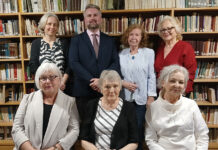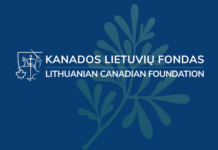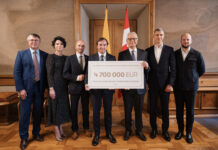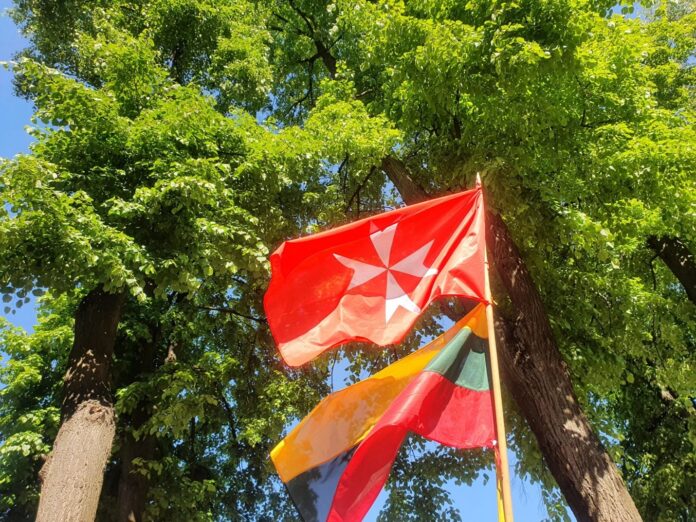
The Order of Malta?
With a mere 30 years in Lithuania, this international, ancient order is still helping others
Historical Background
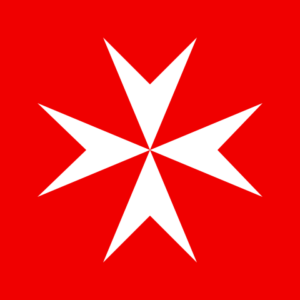
The Sovereign Military Order of Malta (SMOM), officially the Sovereign Military Hospitaller Order of Saint John of Jerusalem, of Rhodes and of Malta, commonly known as the Order of Malta, Malta Order or Knights of Malta, is a Catholic lay religious order, traditionally of military, chivalric and noble nature. Though it possesses no territory, the order is a sovereign entity of international law and maintains diplomatic relations with many countries.
SMOM claims continuity with the Knights Hospitaller, a chivalric order that was founded c. 1099 by the Blessed Gerard in the Kingdom of Jerusalem. The order is led by an elected Prince and Grand Master. Its motto is Tuitio fidei et obsequium pauperum (“defence of the faith and assistance to the poor”). Its modern-day role is largely focused on providing humanitarian assistance and assisting with international humanitarian relations, for which purpose it has had permanent observer status at the United Nations General Assembly since 1994.
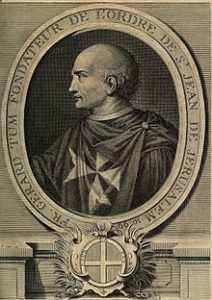
The birth of the Knights Hospitaller dates back to around 1048. Merchants from the ancient Marine Republic of Amalfi obtained from the Caliph of Egypt the authorization to build a church, convent, and hospital in Jerusalem, to care for pilgrims of any religious faith or race. The Order of St. John of Jerusalem – the monastic community that ran the hospital for the pilgrims in the Holy Land – became independent under the guidance of its founder, the religious brother Gerard.
With the Papal bull Pie postulatio voluntatis dated 15 February 1113, Pope Paschal II approved the foundation of the Hospital and placed it under the aegis of the Holy See, granting it the right to freely elect its superiors without interference from other secular or religious authorities. By virtue of the Papal Bull, the hospital became an order exempt from the control of the local church. All the Knights were religious, bound by the three monastic vows of poverty, chastity and obedience.
The constitution of the Christian Kingdom of Jerusalem during the Crusades obliged the order to take on the military defence of the sick, the pilgrims, and the captured territories. The order thus added the task of defending the faith to that of its hospitaller mission. As time went on, the order adopted the white, eight-pointed Cross that is still its symbol today. The eight points represent the eight beatitudes that Jesus pronounced in his Sermon on the Mount. In February 2013, the order celebrated the 900th anniversary of its papal recognition with a general audience with Pope Benedict XVI and a Mass in Saint Peter’s Basilica.
SMOM has formal diplomatic relations with 110 states and has official relations with another five states and with the European Union. Additionally it has relations with the International Committee of the Red Cross and a number of international organizations, including observer status at the UN and some of the specialized agencies. Its international nature is useful in enabling it to pursue its humanitarian activities without being seen as an operative of any particular nation.
Lithuanian Order of Malta
This year, the Order of Malta celebrates its relatively short 30-year lifespan in Lithuania, where over 1500 volunteers in 43 chapters offer aid to seniors, children in impoverished families, the disabled, persons in crisis and refugees. It was established in 1991 by the Catholic clergy to provide humanitarian aid to people of all races, beliefs and nations. Now, 30 years later, 500 of its members are young Lithuanians. They provide food and care for 2600 seniors, have 16 children’s day care centres, and support 1227 middle school pupils throughout Lithuania. They provide transportation for the ill and disabled, and have organized multiple pilgrimages to Lourdes and Lithuania’s famous shrine, Šiluva.
Although the main workforce of the organization consists of volunteers, sponsors and honorary members have always had a vital role in providing financial support for its charity work.
Such members existed in Lithuania as far back as the time of the Grand Duchy, when families such as the Radvila, Pacas, Ostrogiškis and Sanguška were the first Lithuanians active in the Order. During Lithuania’s first steps toward freedom, German representatives of the Order of Malta came to Lithuania in 1989. These were unofficial visits, basically to determine what type of medical and social assistance Lithuanians might need in their continuing struggle for independence from the Soviet Union. A great number of aid shipments were sent after the attempted Soviet takeover on January 13, 1991, with hospitals in dire need of medical supplies, beds, and medication. As quickly as January 17 Lithuania received huge donations of medications, medical apparatus and clothing. Although Soviet tanks were still in place, German representatives visited the injured in hospitals and transported several of the severely wounded to medical facilities abroad.
After these events, an Order of Malta office was established to coordinate with the Lithuanian government and clergy regarding the formation of a chapter in Lithuania, which finally happened in October, 1991. In the very first year, the Lithuanian Order of Malta organized two food kitchens, a nursing home in Vilkaviškis, and worked to obtain funds for hospitals, nursing homes, shcools and children’s homes throughout the country.
Honorary member of the Order and founder of the “Maltese Soup” movement, President Valdas Adamkus noted that the work of the Order is the most meaningful expression of love for humanity, which has ensured its existence throughout the centuries.
News from Bernardinai.lt, wikipedia.org




